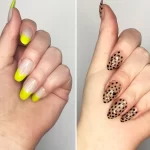What nonverbal communication skills should be used when interviewing a patient?
When interviewing a patient, healthcare professionals need to employ specific nonverbal communication skills to build trust, establish rapport, and create a comfortable environment for effective communication. Here are some essential nonverbal communication skills to use during patient interviews:
- Active Listening: Use attentive body language, such as nodding and maintaining eye contact, to show that you are actively listening to the patient’s concerns and expressions.
- Empathy and Understanding: Display empathy through facial expressions and body language to convey understanding and compassion for the patient’s feelings and experiences.
- Open Posture: Adopt an open and welcoming posture to make the patient feel comfortable and encourage them to share their thoughts openly.
- Gentle Touch: If appropriate and with the patient’s consent, use gentle touch (e.g., a reassuring hand on the shoulder) to convey comfort and support.
- Personal Space: Be mindful of the patient’s personal space and avoid invading it to respect their boundaries and ensure their comfort.
- Maintaining a Calm Demeanor: Maintain a calm and composed demeanor to help the patient feel at ease and reduce any anxiety they may be experiencing.
- Mirroring: Subtly mirror the patient’s body language to build rapport and establish a sense of connection.
- Encouragement: Use positive facial expressions and gestures to encourage the patient to continue sharing their thoughts and feelings.
- Respectful Silence: Allow for moments of silence during the conversation to give the patient time to process information or share more without feeling rushed.
- Eye Contact: Make appropriate eye contact throughout the conversation to show attentiveness and respect.
Remember that effective nonverbal communication can significantly impact the patient-provider relationship and contribute to better patient outcomes. It’s important to be genuine, respectful, and attentive while using these nonverbal communication skills during patient interviews. Additionally, always be aware of the patient’s comfort and consent when incorporating touch or personal space in the interaction.
Interview preparation classes in sector-34 in Chandigarh It is provide by Cbitss in sector- 34 in Chandigarh
What effect does nonverbal behavior have during the interview process?
Nonverbal behavior has a significant effect on the interview process and can influence how the interviewer perceives the candidate or patient, as well as impact the overall communication and impression. Here are some effects of nonverbal behavior during the interview process:
First Impressions
Nonverbal cues, such as appearance, handshake, and eye contact, contribute to forming immediate first impressions. Positive nonverbal behavior can create a favorable initial perception of the candidate or patient.
Building Rapport
Positive nonverbal behavior, like mirroring body language and using open gestures, helps build rapport and establishes a sense of connection between the interviewer and interviewee.
Confidence and Competence
Nonverbal cues, such as a firm handshake, maintaining eye contact, and speaking clearly, can convey confidence and competence, enhancing the candidate’s or healthcare professional’s perceived capabilities.
Active Listening
Demonstrating active listening through nonverbal cues like nodding and maintaining eye contact makes the interviewee feel heard and understood, leading to more effective communication.
Emotional Expression
Nonverbal behavior, including facial expressions and gestures, can convey emotions and attitudes, impacting how interviewees or patients are perceived emotionally.
Trust and Credibility
Positive nonverbal behavior enhances the trustworthiness and credibility of the interviewee or healthcare professional, which is essential for effective communication and decision-making.
Engagement and Interest
Engaging nonverbal cues, such as leaning forward and showing enthusiasm, demonstrate the interviewee’s interest in the position or the healthcare professional’s genuine concern for the patient’s well-being.
Understanding and Empathy
Nonverbal cues, like empathetic facial expressions, can convey understanding and empathy, creating a supportive environment for open and honest communication.
De-escalating Tension
Positive nonverbal behavior can help de-escalate tension or nervousness during the interview process, making the interviewee feel more at ease.
Reinforcing Verbal Messages
Nonverbal cues that align with verbal responses enhance the clarity and credibility of the interviewee’s or healthcare professional’s message.
Cultural Sensitivity
Being aware of and adapting nonverbal behavior to be culturally sensitive can improve cross-cultural communication and reduce misunderstandings.
Overall Communication Impact
Nonverbal cues play a role in how the interviewee’s or patient’s message is perceived and understood, contributing to the effectiveness of the interview or healthcare interaction.
It’s crucial for interviewees and healthcare professionals to be mindful of their nonverbal behavior during the interview process to ensure it aligns with their intended message and conveys the desired impression. Positive nonverbal cues can strengthen communication, build trust, and facilitate a positive and productive interaction.
If you required any then visit our website:- Interview preparation classes in Chandigarh
Read more article:-Tafwins.



